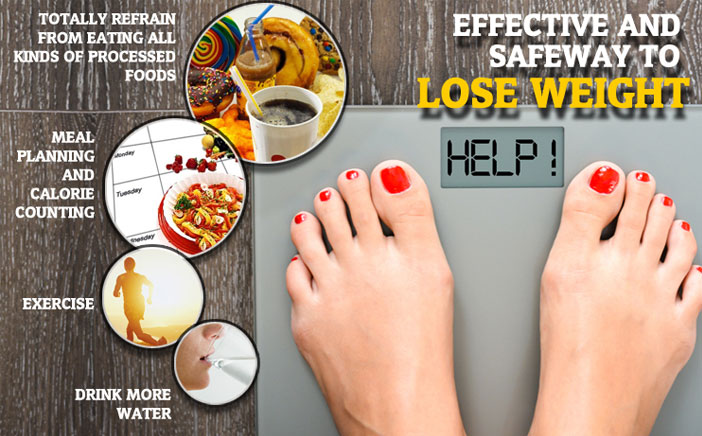
One in three people or 36.5% of the U.S. population suffers from obesity. Apart from a miserable and painful life, obesity can also cause heart diseases such as atherosclerosis, initiate cancers, affect the skeletal health adversely and be a cause of many other diseases. Earlier people counted on exercising alone towards losing weight. However, recent studies and data reveal that exercise alone is not fruitful enough to bring in weight gain if you do not emphasize on changing your diet pattern as well. The weight-loss exercise to diet ratio towards losing is 30:70, i.e. diet is almost twice more important than exercise towards losing weight.
As you are now aware of the equation, you can fully understand how important your daily consumption of food is, when you desire to achieve an appropriate BMI. Next, you should know the steps that will help you eat clean and properly for losing weight. You will soon know what clean eating is in reference to weight loss. But first let me reveal to you one by one the 4 important steps towards losing extra pounds that you have gathered around your thighs, arms, belly and other body areas.
Step 1: Totally refrain from eating all kinds of processed foods and shun the artificial sweeteners
Eating clean means eating only organic, fresh and wholesome foods that are not processed in any way. Processing of food removes the necessary nutrients from them and these include vitamins, proteins, fibre, healthy fats, and minerals. What can be found in the processed food is high amounts of unhealthy saturated fat that only enhances your body’s fat burden, excess salt (bad for your heart) and oils that clog your arteries and cause heart and cardiovascular disease. Artificial sweeteners are high in calories and a recent study found them to awaken cancer-causing substances.
So what can you actually do to eat clean and natural every day? Do not shop for any of the pre-made boxed foods that can be found very easily in the supermarkets. Instead, reach out to your grocery store and pick the fresh vegetables and fruits, whole grains (replace the spiced white rice with brown rice), lean meat (high in proteins and low in fats), brown bread etc. Cannot resist chocolates? Choose the natural dark chocolates and do not consume the sugar-free chocolates that have the artificial sweeteners that are not good for your health when you consume them for a long term.
And how if the food you eat also contributes towards fat loss? Certain foods can fasten your metabolism rate and lead to burning of more calories during the day (no exercise needed!). These include green tea, coffee, peppers, citrus fruits, apples, berries, fish, poultry, eggs (avoid the yolk though), almonds, eggs, spinach, and broccoli. The least you cook your foods, the better. Use lesser and optimum amount of oil and salt for cooking your food and do not overheat and overcook them, as unnecessary cooking drains the nutrients away from the organic and fresh foods.
Step 2: Meal planning and calorie counting
Men should consume at least 1800 and women 1200 calories during the day, in order to have good health and optimum metabolism rate. Hence this is the least amount of calories that you have to consume in a day, whether you are trying to lose weight or not.
You should know what weight you are targeting to achieve, and then plan your calorie intake accordingly. The calorie-to-weight equation is easy to remember. Just add a zero to the weight (measured in pounds) that you are planning to achieve. For instance, if you want to weigh 140 pounds, eat 1400 calories a day (remember not go below 1200 calories a day). You can find here the calorific value of some foods that are eaten commonly. Calculate your meals according to the weight goals you have in mind. Also, take a notebook and note down everything you eat, according to the day and date. The habit will make you more aware of your diet patterns and calorie consumption. Add more fibre to your diet and include necessary amounts of vitamin, mineral and carbohydrate food sources as well.
Step 3: Exercise
You need to move more when you wish to lose weight. Cardiovascular exercises like running, swimming, jogging (or a brisk walk), weightlifting and yoga are all useful towards losing weight. Try to be as lean as possible. Increase the time of exercise sessions gradually and do not overstress yourself initially, as at the start the stamina is low.
Step 4: Drink more water
Drinking between 3 to 4 litres of water every day will help you lose more extra fat. While it may sound a large quantity, you will be able to drink this amount easily (and even more) if you sweat during your exercise sessions, eat the right foods (as explained above) and remain active for the most part of the day. Apart from losing weight, water helps in cleaning of the internal body system and removes the toxins (including cancer-causing free radicals) away from the body. Start with lesser amount initially and gradually increase water intake, when you do not feel comfortable to consume 3 .5 litres at the very start.
Stay motivated and keep in mind that every day brings to yourself new set of opportunities. Set reasonable and achievable goals and do not neglect any part of the weight-loss plan, in order to achieve the best results.



